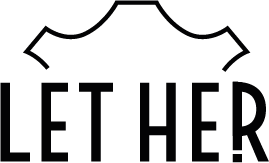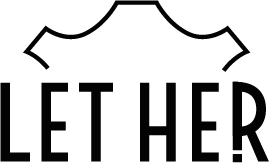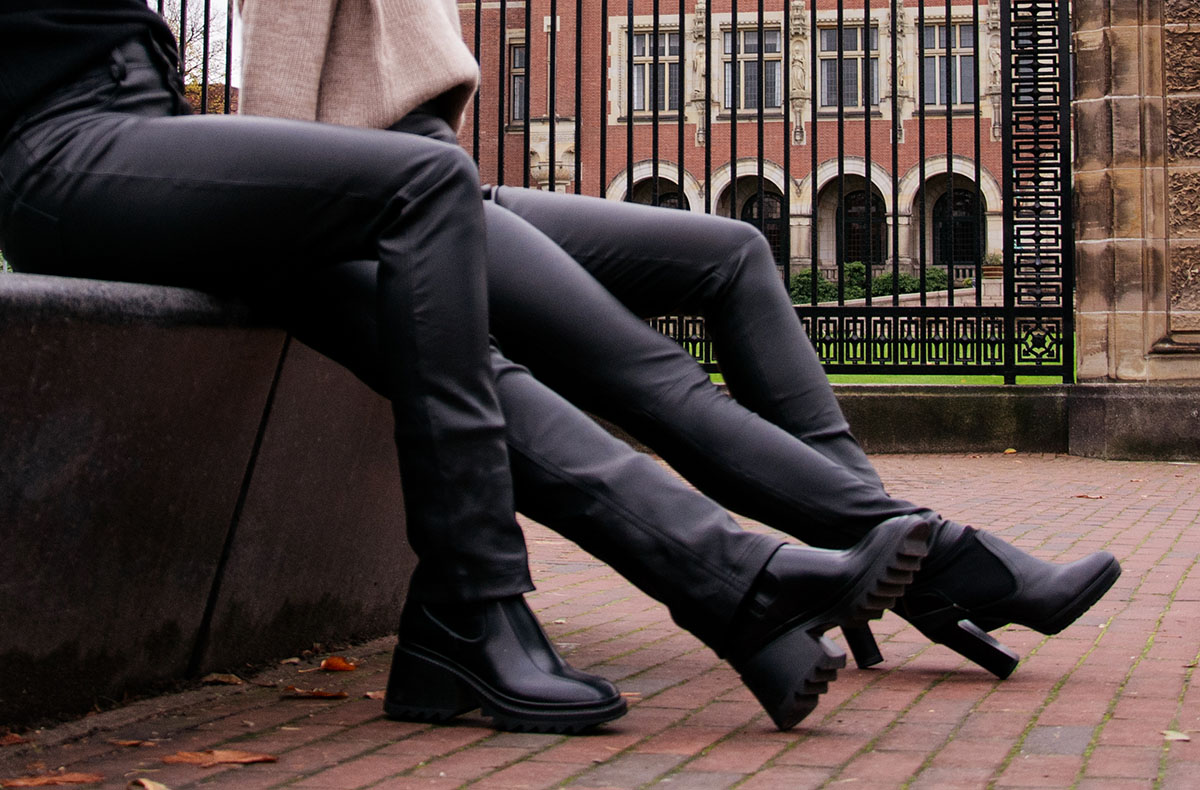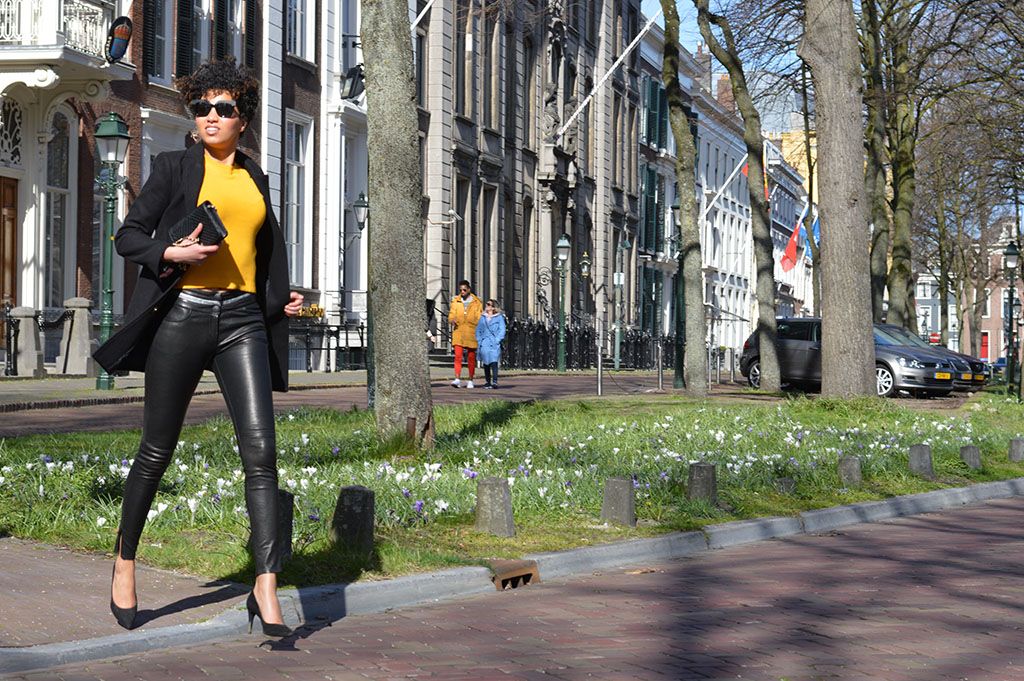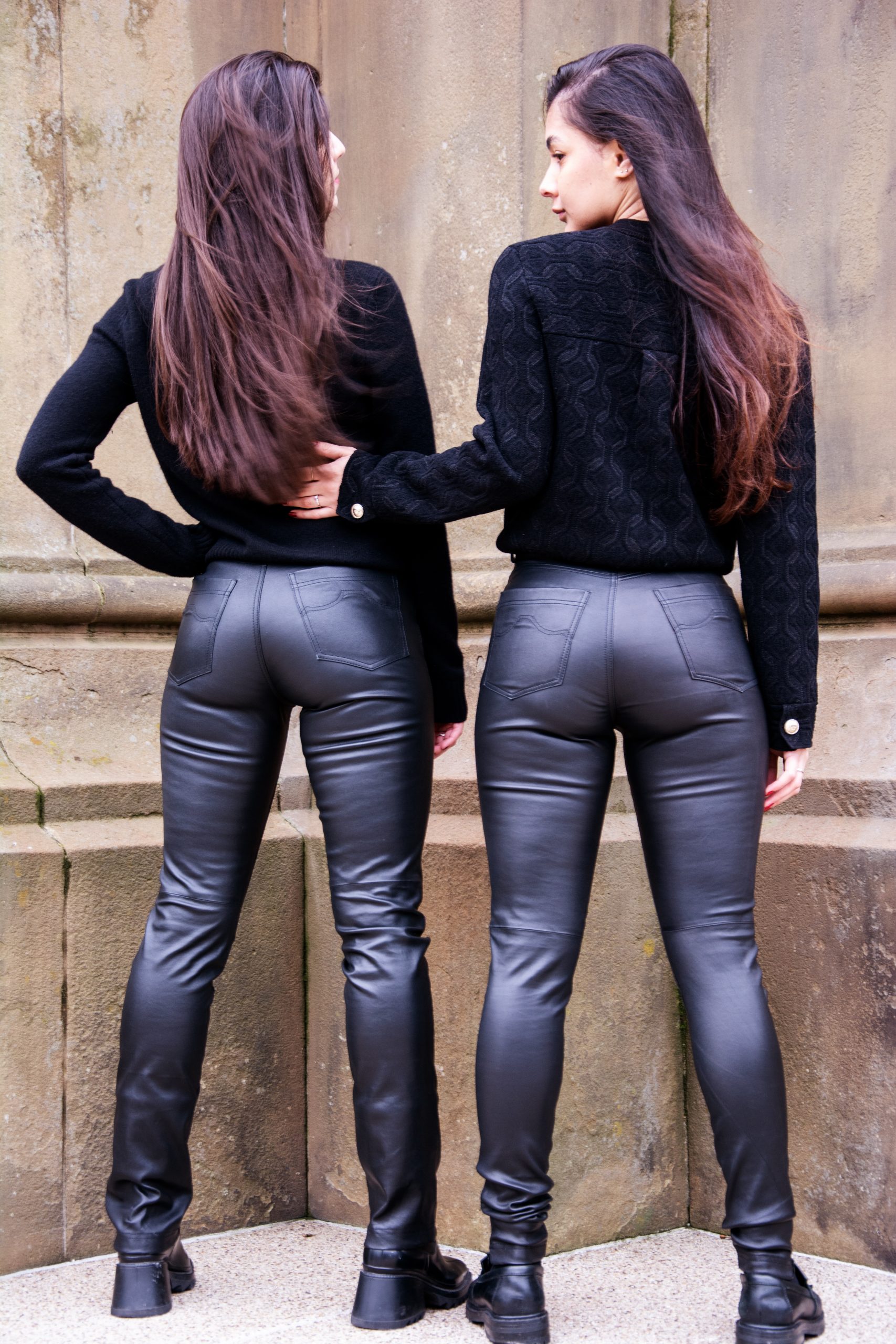Genuine and faux leather often appear similar, but subtle differences exist that are crucial when making a well-considered choice for your clothing or accessories. It’s time to unravel the mysteries and provide clarity on the distinction between these two types of leather.
In brief – what you will encounter in this blogpost:
- How to distinguish real leather from artificial leather
- How to categorise different types of leather based on sustainability, price, style and care requirements
- What different types of leather are available
Properties of genuine leather
Genuine leather possesses a unique suppleness and elasticity that you instantly feel when touching it. It feels soft and carries that unmistakable natural scent. Durability is an essential characteristic, with genuine leather enduring the test of time while maintaining its flexibility.
Features of faux leather
Faux leather, on the other hand, might occasionally reveal a hint of plasticity in its scent. Although easier to maintain and often more animal-friendly, it might be less durable than its natural counterpart. It offers a budget-friendly alternative that easily wipes away stains, but it may lack the luxurious appearance of genuine leather.
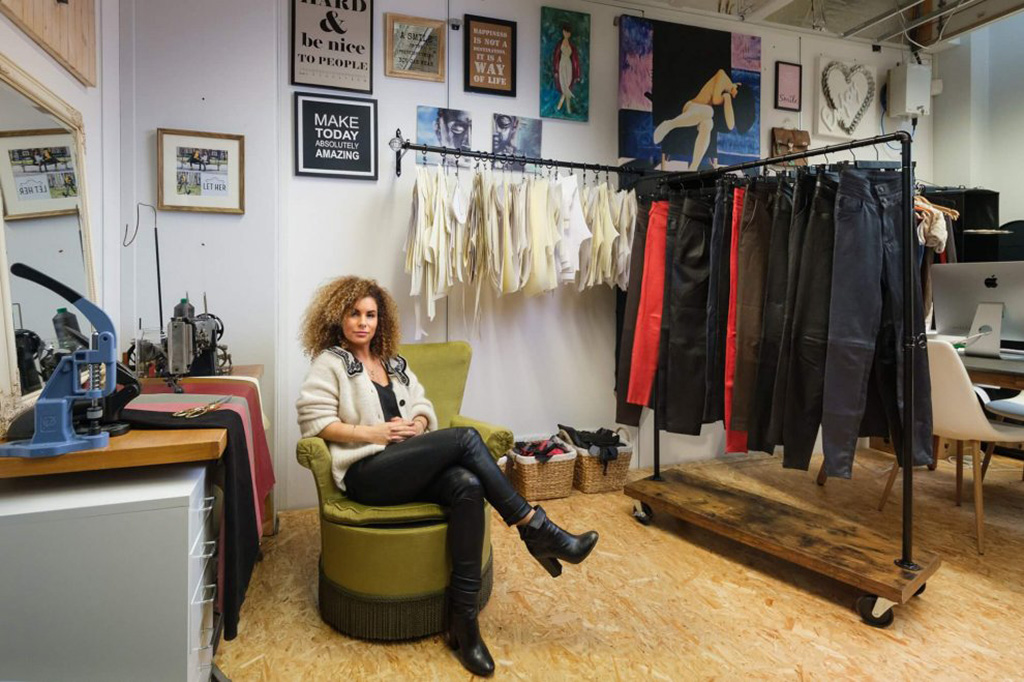
My preference as a female fashion designer
As a fashion designer, I’m continually fascinated by the versatility of various leather types. Personally, I find lambskin to be an exceptional material to work with. Incredibly supple, it offers a fantastic degree of flexibility, ideal for creating intricate and structured designs. Additionally, lambskin exudes a beautiful natural gloss, lending my creations an elegant aura.
Regarding the leather I prefer to wear, nappa leather reigns as my absolute favorite. It feels incredibly soft and supple against the skin, providing an extraordinarily comfortable experience. Nappa leather also possesses that luxurious allure that’s hard to resist, making it my ideal choice for daily comfort and style.
While lambskin and nappa leather stand as my personal preferences due to their attributes and feel, I acknowledge the diverse qualities of other leather types and am always eager to experiment with new materials to realize unique designs.
Assessment of various leather types
There are many different types of leather in the leather industry. In the context of this blog, we distinguish between the following types of leather:
- Lambskin
- Beef leather
- Buffalo leather
- Calfskin
- Split leather
- Faux leather
- Vegan leather
- Suede
- Nubuck
- Nappa leather
- Stretch leather
Durability of different leather types
Cowhide leather: Ranks high on the durability scale due to its natural grain pattern and robust nature, ideal for sturdy designs.
Buffalo leather: Comparable to cowhide in durability, exuding toughness due to visible hair follicles, suitable for everyday use.
Calfskin leather: Slightly more vulnerable than cowhide and buffalo leather, demanding regular maintenance to preserve its quality.
Suede and nubuck: Luxurious but prone to stains and wear due to texture, requiring extra care to maintain.
Nappa leather: Very soft and durable, yet demanding careful maintenance due to its softness.
Price of leather
Cowhide and buffalo leather: Generally reasonably priced owing to their durability and availability.
Calfskin, suede, nubuck, and nappa leather: Residing in the higher price segment due to their refined appearance and often more delicate nature.
Appearance of different sorts
Calfskin, suede, nubuck, and nappa leather: Exuding luxury and elegance due to their soft texture and attractive appearance.
Cowhide and buffalo leather: Possess a more rugged and robust appearance, ideal for sturdier designs and accessories.
Maintenance needs for different leather types
Calfskin, suede, nubuck, and nappa leather: Demand more care and attention due to their sensitivity to stains and wear.
Cowhide and buffalo leather: Require less intensive maintenance owing to their natural robustness.
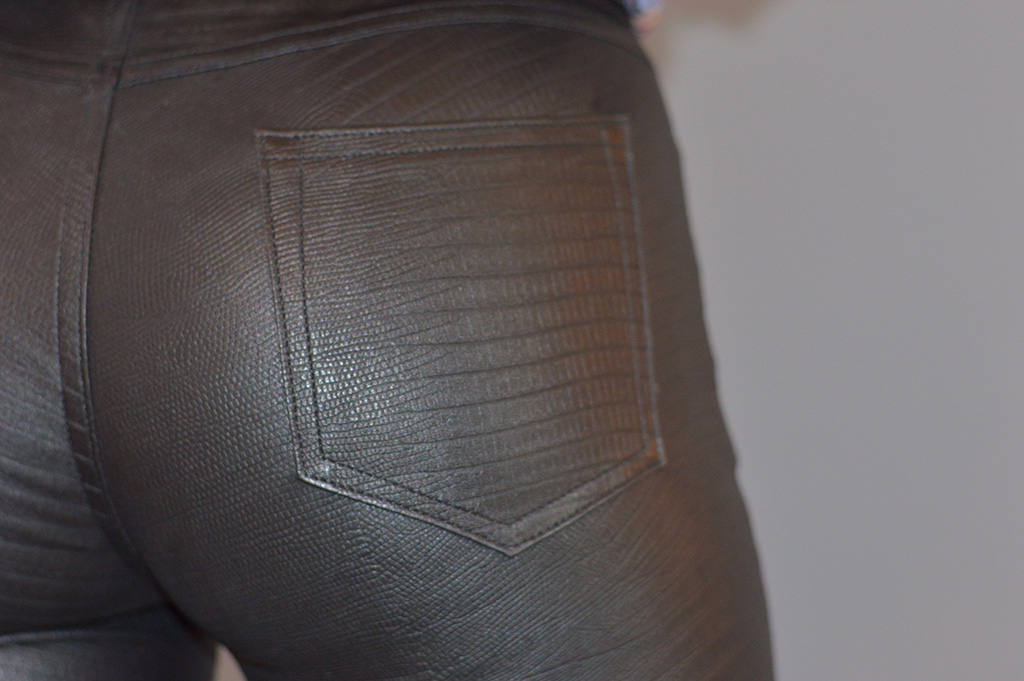
Delving deeper into different leather lypes
Various leather types exist, each boasting unique properties:
- Lambskin: High comfort but prone to scratches, known for its exceptional softness and flexibility, adding a natural gloss to clothing and accessories.
- Nappa Leather-Stretch: Smooth, soft, and durable, often dyed and crafted from lamb or sheepskin, ideal for products requiring flexibility, like gloves, bags, jackets, and trousers.
- Cowhide Leather: Durable with a natural grain, needing moderate maintenance, suitable for products desiring sturdiness and a natural appearance.
- Calfskin Leather: Fine and supple, often used in high-end products like luxury bags and accessories but tends to be pricier.
- Suede and Nubuck: Luxurious but susceptible to stains and requiring meticulous care to maintain their appeal.
- Vegan and Faux Leather: Ethically friendly and easier to maintain but potentially less durable and environmentally impactful due to synthetic materials.
Lambskin – High comfort but prone to scratches
Lambskin is renowned for its extraordinary softness and suppleness, making it easy to work with for intricate designs. It naturally exudes a refined gloss that adds a luxurious touch to garments and accessories. Thanks to lambskin’s flexibility, designs maintain their shape while remaining comfortable and mobile.
Lambskin advantages:
+ Soft and supple feel on the skin
+ Natural gloss
+ Elegant appearance
Lambskin disadvantages:
– More susceptible to scratches and damages
– Requires more care and maintenance than other types of leather
Cowhide leather – Durable with a natural grain, requires some maintenance
Cowhide leather is recognized for its durability and natural grain. This type of leather demands some maintenance to preserve its quality. It suits products requiring sturdiness and a natural appearance, such as sturdy bags and jackets. Keep in mind that cowhide leather can be prone to stains, needing regular maintenance to retain its splendor.
Cowhide leather advantages:
+ Natural grain
+ Flexible and sturdy
+ Durable
Cowhide leather disadvantages:
– Not easy to maintain
– Heavier
Calfskin leather – Fine and supple but often a bit pricier
Calfskin leather is fine and supple, often boasting a velvety appearance. It’s commonly used for high-quality products like luxury bags and accessories. This type of leather is durable but can be pricier. However, calfskin leather tends to be more sensitive to damages, requiring careful handling.
Calfskin leather advantages:
+ Supple feel with a fine structure
+ Durable
Calfskin leather disadvantages:
– Moderately expensive
Nappa stretch leather – Supple, soft, and durable: The perfect leather
Nappa leather is a supple, soft, and smooth type of leather. Usually dyed and made from lamb or sheepskin, it, like Nubuck leather, can withstand tough usage, considered a robust type of leather. Often used for products requiring smooth movement, like gloves, bags, jackets, and trousers. Stretch leather has a coating layer applied inside the leather to allow the garment to stretch, primarily used in trousers.
Nappa leather advantages:
+ Luxurious appearance
+ Comfortable to wear
+ Durable
+ Resistant to damages
+ Supple, soft material
Nappa leather disadvantages:
– Sensitive to water stains
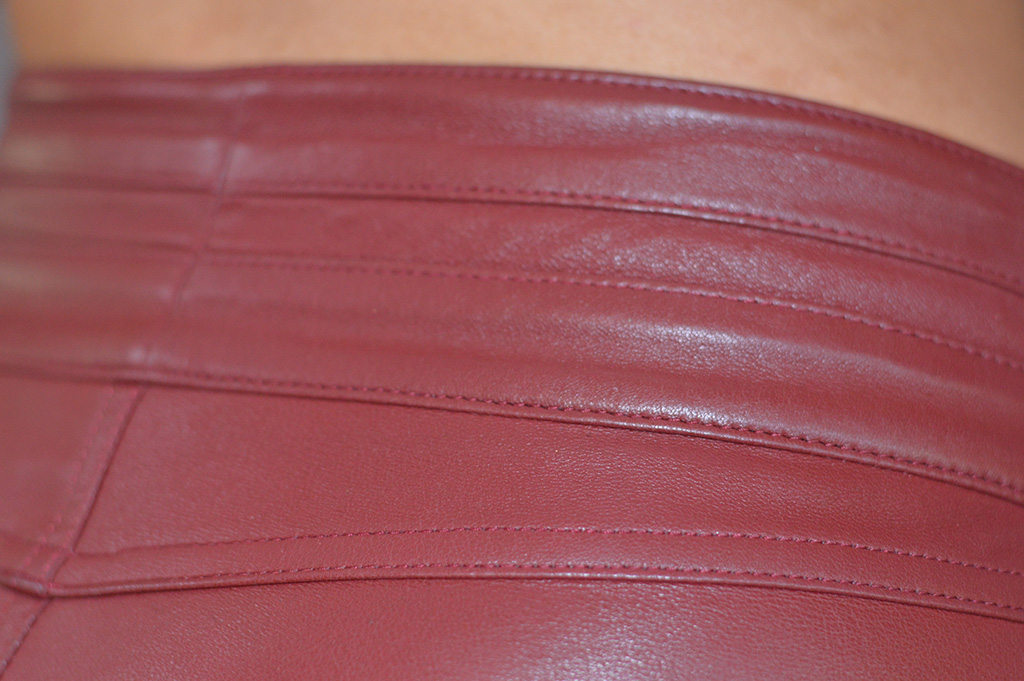
Suede and nubuck – Luxuriously feeling, silky but more susceptible to stains
Suede and Nubuck both possess a luxurious appearance, feeling silky and soft. Suede comes from the underside of the skin, while Nubuck originates from the outside, resulting in a slightly firmer material. Both are more sensitive to stains and require more care and maintenance than other leather types. They’re perfect for stylish accessories but need regular cleaning and protection from moisture.
Suede and nubuck leather advantages:
+ Luxurious appearance
+ Soft feel on the skin
Suede and nubuck leather disadvantages:
– Sensitive to stains
Vegan and faux leather – Easy maintenance but less comfortable
Vegan and faux leather are animal-friendly alternatives and easy to maintain. They suit individuals aiming for ethically responsible products. These leather types are generally less durable than real leather and might wear out quicker over time, thus producing more waste. While environmentally friendly, they often have a larger environmental impact due to the use of synthetic materials that are less biodegradable.
Vegan and faux leather advantages:
+ Easy to maintain
+ The most ethical choice
Vegan and faux leather disadvantages:
– Wear out quicker, producing more waste
– Less breathable
Split Leather – Cheap but less strong
Split leather is a cheaper type of leather created when the skin is divided into multiple layers. Split leather is 100% natural leather, meaning it doesn’t involve artificial treatments.
Split leather advantages:
+ Inexpensive
+ Easy maintenance
Split leather disadvantages:
– Can discolor
– Less sturdy
– Less durable
Buffalo leather – Sturdy, durable but slightly pricier
Buffalo leather emanates toughness and robustness. Made from water buffalo hides, the natural color often remains intact due to vegetable tanning processes. This leather type is durable but can be prone to stains, requiring careful maintenance. Buffalo leather products are ideal for those seeking a sturdy and natural appearance, but note that they can be a bit pricier.
Buffalo leather advantages:
+ Sturdy
+ Durable
Buffalo leather disadvantages:
– Prone to stains
– Relatively pricey
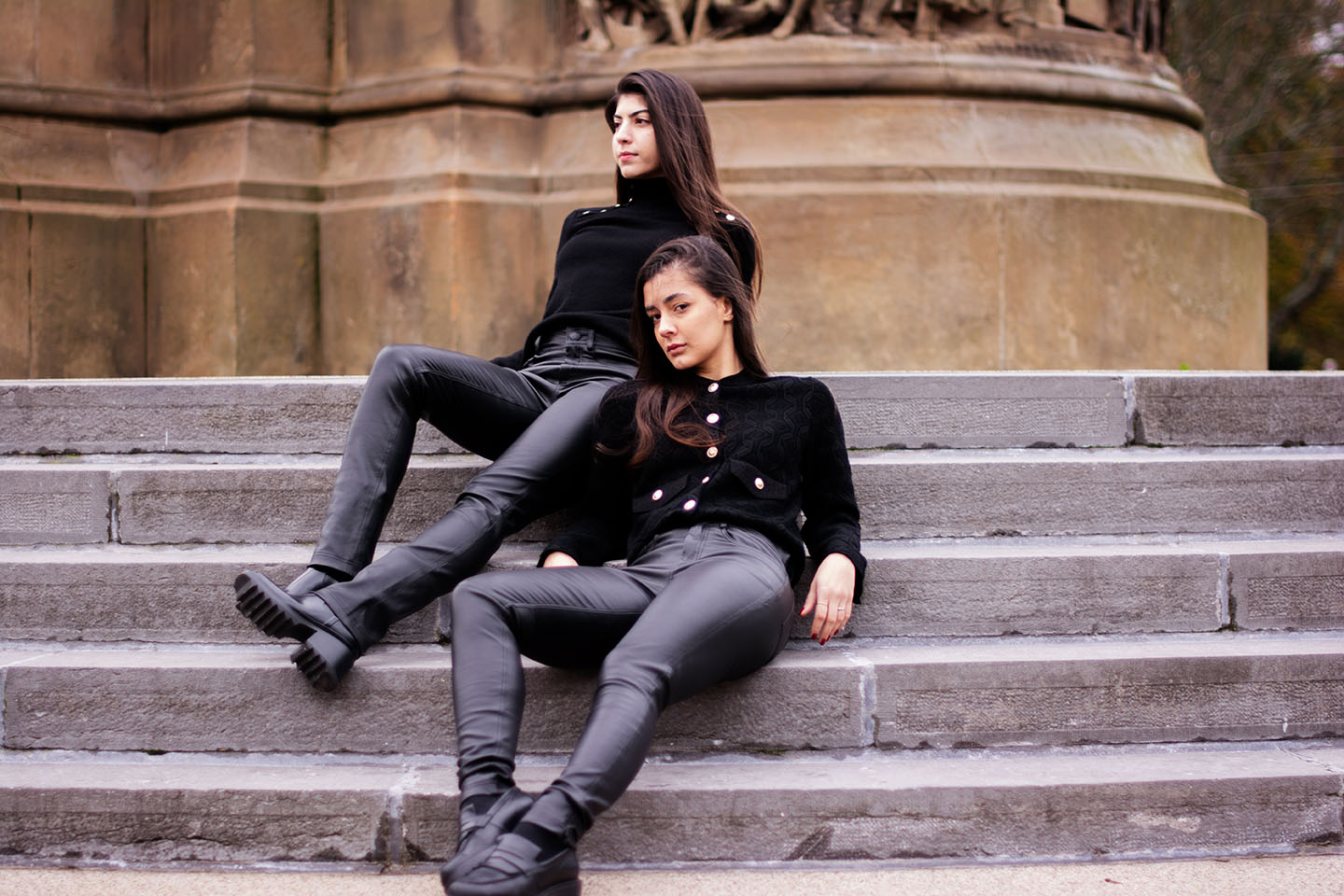
Tips for smart choices
When selecting a leather-made product, focus on the attributes most important to you. Reflect on longevity, ease of maintenance, and the appearance you aim to achieve.
- Inspect the product: Examine the finish, feel the material, and sniff it to distinguish genuine from faux leather.
- Be aware of your priorities: Is durability crucial? Or is it more about animal-friendliness and convenience?
- Maintenance: Consider how much time you’re willing to invest in maintaining the product. Genuine leather often requires more care.
The difference between genuine and faux leather is subtle yet significant
Genuine leather exudes durability and authenticity, while faux leather can be more practical in terms of maintenance and price. Making the right choice hinges on your personal needs and values. By being aware of the attributes and pros and cons of both materials, you can make an informed decision with your next purchase.
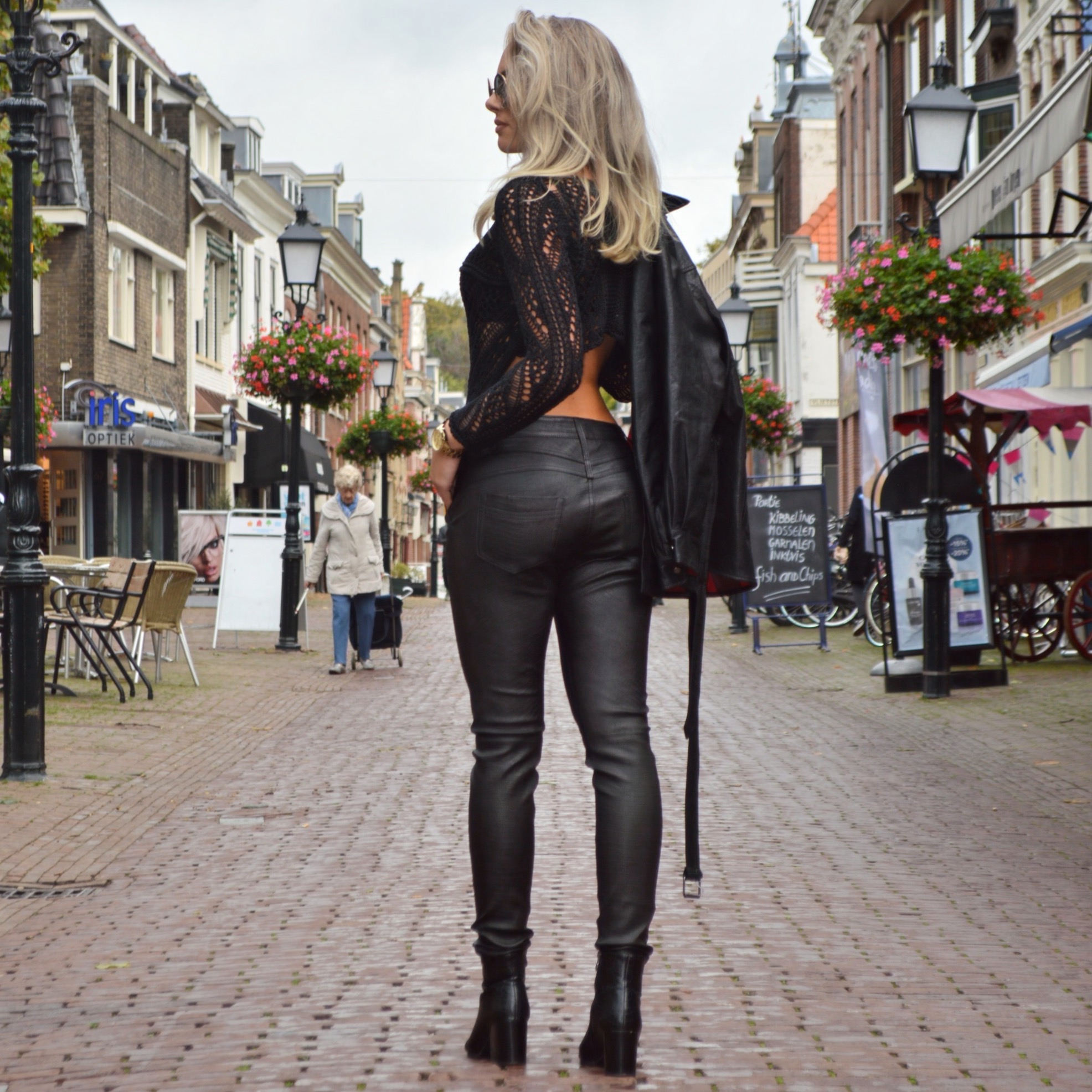
You want real leather pants?
Now that you know the differences between real leather and faux leather, there can probably only be one choice, right? Check out our latest models in our online shop.
FAQs – Genuine and faux leather
What's the best way to distinguish between genuine leather and faux leather when purchasing products?
The most reliable method to differentiate between genuine and faux leather is by closely examining the texture and smell.
- Genuine leather tends to have a unique, natural texture, often with imperfections that signify its authenticity.
- Additionally, the smell of real leather is distinct, usually earthy or leathery, whereas faux leather might have a more chemical or plastic-like odor.
Also, inspecting the edges or folds can reveal the fabric’s true nature—genuine leather edges generally fray over time, while faux leather might have a uniform, perfect edge.
Are there specific care tips for different types of leather to ensure their longevity?
Indeed, various types of leather require specific care to maintain their quality.
For instance, smoother leathers like lambskin or Nappa leather need gentle cleaning using a soft, damp cloth and periodic conditioning to retain their softness and sheen.
Suede and Nubuck necessitate regular brushing with a suede brush and protection with a waterproofing spray due to their susceptibility to stains.
It’s crucial to read and follow manufacturer instructions or seek advice on the appropriate care routine for your specific leather type to ensure its durability.
In terms of environmental impact, which types of leather are considered more sustainable or eco-friendly?
When considering the environmental impact, certain types of leather stand out as more sustainable options.
Vegetable-tanned leather, made using natural tannins from plant sources, is known for its eco-friendliness compared to chrome-tanned leather, which uses more chemicals.
Additionally, leather derived from by-products of the meat industry, like cow leather, reduces waste and is relatively sustainable.
However, it’s essential to note that artificial leather, despite not using animal products, might have a significant environmental footprint due to the synthetic materials used in its production.
Opting for high-quality, durable leather goods that last longer can also contribute to sustainability by reducing frequent replacements and waste.
